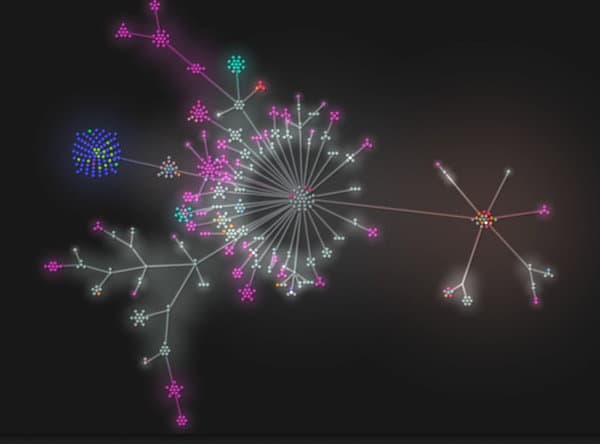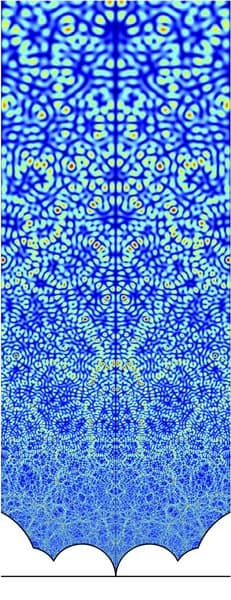Scientists Are Set To Uncover New Secrets Of The 'Mathematical Universe'
It is perhaps an innate feature of the human race, which draws us to the most fundamental aspects of life that ponder about our very existence and the structure of the universe which we call home. Why does the universe have the precise values of fundamental constants and properties, necessary to support intelligent life? According to the philosophical consideration called the anthropic principle, if the universe was any different, we(humans) would not have been present to observe it. Sounds poetic or unscientific? This forms the base of the much debated Mathematical Universe hypothesis.
MIT Cosmologist Max Tegmark proposed that the physical reality is nothing but a mathematical structure which articulates real-world objects in pure mathematical sense. His candidate for the “Theory of Everything†is a concrete perception, a reality to the believers, which states that the world is formed with only mathematical equations consisting of arbitrary initial conditions and physical constants we often encounter in differential equations. Then what about the things that we see? They are supposed to be the manifestation of the underlying mathematical structure, or rather it’s what WE SEE but might not exist in reality. The external reality comprising “galaxiesâ€, “starsâ€, â€treesâ€, “cells†or us “humans†are said to be assumptions which we ought to invoke in order to soothe our minds or to describe our feelings.

A Maass form, one of the 20 different types of objects in the LMFDB
The Theory states that, if it were “real†or a universal truth, then it must have been the same for non-living beings or super computers which work according to our will. Arguably, the hypothesis converges to a point from where no such divergence function has been set to screen through the zoomed version. Mostly, it was praised and placed in the long queue of upcoming theories about universe until only recently, when a group of mathematicians published a research showing an unplumbed map diagram of the mathematical universe, gleaming with the simulated intensity lights.
A research team from the university of Dartmouth has publicized an online resource consisting of a mathematical model map, quite similar to the Atlas. The press release confirmed that the team made use of “L-functions and Modular Forms Databaseâ€, a catalogue which gathers everything required to study the mysterious universe from tables, formulae, links, and references related to L-functions, Elliptic curves, Maass forms etc. The output is an effect of collaboration among mathematicians, physicists and computer scientists who belong to different institutions. John Voight, a project associate and professor of Mathematics at Dartmouth claimed that their research has discovered the building block required to breathe life into the missing links.

The current state of the LMFDB source code
An acknowledged realization of mathematics in the late 20th century is the complete proof of Fermat’s Last theorem by British number Theorist Andrew Wiles. The complicated solution actually pushed two supposedly distinct notions closer to each other. The first one being elliptic curves and the second one, modular forms. An elliptic curve is a non-singular plane algebraic curve that cumulatively expresses a simple cubic polynomial and is applied as the core feed behind cryptographic protocols used by most of the tech giants such as Google, Amazon and Facebook. However, modular forms are a more enriched concept filled with mathematical beauty as it features an analytic function with an unimaginable degree of symmetry.
Scientists explained that while elliptic curves and modular forms are joined together via their L-functions, two worlds interconnect and one can travel from one world to other, simply with the click of a mouse. The LMFDB stores and validates a large amount of data which are recorded and requires hundreds of years of computing time for compilation.
Edgar Costa, a LMFDB research associate and a post-doctoral fellow emphasized that the computational approach towards the large record has started to unveil the structure, which the world is yet to witness. The tool is currently also available for educational purposes and it is surely succeeding in rediscovering mathematics and the underlying reality that permeates the vastness of the universe . Ultimately, after traversing such a long distance, we can ask that if we recreate a wormhole using a computer, will it take us to a physical “wormhole"? Or, is everything a dream within a dream ? Only time will tell.
The complete research was supported by Dartmouth's Neukom Institute for Computational Science and was published in the American Institute of Mathematics Workshop on Higher Rank L-Function.
Watch LMFDB busy Bees:
Picture And Caption Source: #-Link-Snipped-#
Source: <a href="https://www.lmfdb.org/" target="_blank" rel="nofollow noopener noreferrer">LMFDB - The L-functions and modular forms database</a> | <a href="https://math.dartmouth.edu/activities/special-events/" target="_blank" rel="nofollow noopener noreferrer">Mathematics Department Special Events | Mathematics at Dartmouth</a>
MIT Cosmologist Max Tegmark proposed that the physical reality is nothing but a mathematical structure which articulates real-world objects in pure mathematical sense. His candidate for the “Theory of Everything†is a concrete perception, a reality to the believers, which states that the world is formed with only mathematical equations consisting of arbitrary initial conditions and physical constants we often encounter in differential equations. Then what about the things that we see? They are supposed to be the manifestation of the underlying mathematical structure, or rather it’s what WE SEE but might not exist in reality. The external reality comprising “galaxiesâ€, “starsâ€, â€treesâ€, “cells†or us “humans†are said to be assumptions which we ought to invoke in order to soothe our minds or to describe our feelings.

A Maass form, one of the 20 different types of objects in the LMFDB
The Theory states that, if it were “real†or a universal truth, then it must have been the same for non-living beings or super computers which work according to our will. Arguably, the hypothesis converges to a point from where no such divergence function has been set to screen through the zoomed version. Mostly, it was praised and placed in the long queue of upcoming theories about universe until only recently, when a group of mathematicians published a research showing an unplumbed map diagram of the mathematical universe, gleaming with the simulated intensity lights.
A research team from the university of Dartmouth has publicized an online resource consisting of a mathematical model map, quite similar to the Atlas. The press release confirmed that the team made use of “L-functions and Modular Forms Databaseâ€, a catalogue which gathers everything required to study the mysterious universe from tables, formulae, links, and references related to L-functions, Elliptic curves, Maass forms etc. The output is an effect of collaboration among mathematicians, physicists and computer scientists who belong to different institutions. John Voight, a project associate and professor of Mathematics at Dartmouth claimed that their research has discovered the building block required to breathe life into the missing links.

The current state of the LMFDB source code
Scientists explained that while elliptic curves and modular forms are joined together via their L-functions, two worlds interconnect and one can travel from one world to other, simply with the click of a mouse. The LMFDB stores and validates a large amount of data which are recorded and requires hundreds of years of computing time for compilation.
Edgar Costa, a LMFDB research associate and a post-doctoral fellow emphasized that the computational approach towards the large record has started to unveil the structure, which the world is yet to witness. The tool is currently also available for educational purposes and it is surely succeeding in rediscovering mathematics and the underlying reality that permeates the vastness of the universe . Ultimately, after traversing such a long distance, we can ask that if we recreate a wormhole using a computer, will it take us to a physical “wormhole"? Or, is everything a dream within a dream ? Only time will tell.
The complete research was supported by Dartmouth's Neukom Institute for Computational Science and was published in the American Institute of Mathematics Workshop on Higher Rank L-Function.
Watch LMFDB busy Bees:
Picture And Caption Source: #-Link-Snipped-#
Source: <a href="https://www.lmfdb.org/" target="_blank" rel="nofollow noopener noreferrer">LMFDB - The L-functions and modular forms database</a> | <a href="https://math.dartmouth.edu/activities/special-events/" target="_blank" rel="nofollow noopener noreferrer">Mathematics Department Special Events | Mathematics at Dartmouth</a>
0

